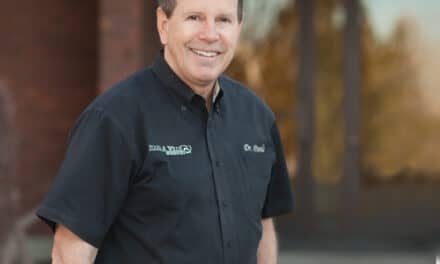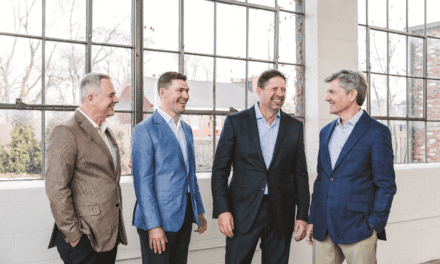Amid founding their own DSO and accelerating their own practice growth, orthodontists Jeremy Lustig, DDS, MS, and Andrew Young, DDS, MS, found a software solution that streamlines patient onboarding across multiple offices and gives patients the payment flexibility they need to say yes to treatment.
By Greg Thompson | Photography by Sarah Hailey
Much of dentistry is devoted to the restorative process, but orthodontists go a step further. Instead of merely correcting a problem and getting back to normal, orthodontists aim to transform, improve, and often uplift the psyche of their patients.
Operating on the premise that better smiles can lead to better lives, Jeremy Lustig, DDS, MS, and Andrew Young, DDS, MS, went the extra mile, getting their orthodontic certificates and Masters degrees at Texas A&M College of Dentistry. The two met while in residency at Dallas-based Texas A&M Dental School, eventually forging a friendship that has morphed into a highly successful orthodontic practice.
“Jeremy and I are very goal-oriented,” says Young, who earned a zoology degree at the University of Wyoming and later attended dental school at the University of Nebraska. “We want to help people and have a positive impact on their self-esteem.”
Lustig made up his mind at the age of 12 to pursue orthodontics, and that single-minded drive continues on the clinical and business ends of the practice. “Orthodontics is a great mixture of the clinical and business aspects of dentistry, even more so than other specialties,” he says. “Orthodontics is appealing to me because while I love interacting with my patients, I also like the business aspect of it. Marketing and working with our staff is another passion of mine.”
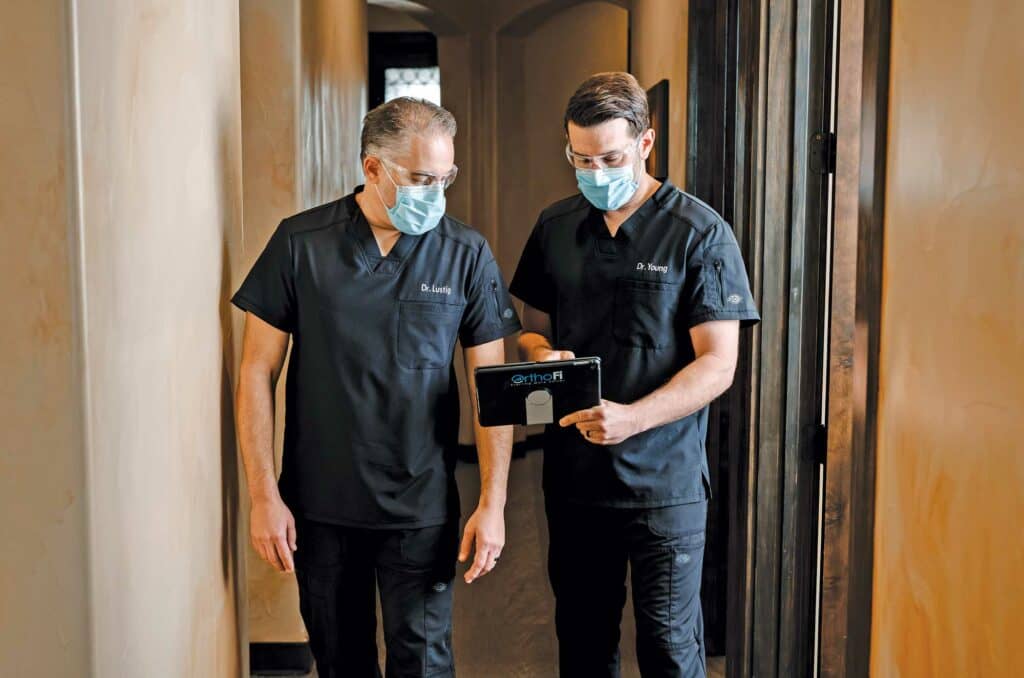
Lustig & Young Expand the Practice
Fort Worth, Texas-based Lustig and Young Orthodontics is a five-location practice with five orthodontic specialists—Lustig, Young, and three associates. An additional 30 employees staff offices in Fort Worth, Keller, Saginaw, Azle, and Haslet.
A multi-location practice often adds to the complexity of business operations; however, it also leads to a greater opportunity to positively affect more people through treatment outcomes. Lustig and Young embraced this challenge by focusing on a systemized team approach to ensure predictability of the patient experience.
“We started with two practices in 2004 and built those from scratch,” says Lustig. “In 2012, we added a third de novo location, and in 2015 we acquired a fourth existing location from a retiring doctor. The acquisition of our fifth location, with similar circumstances to the fourth, was completed in 2018. As the practices matured, we added doctor days to help accommodate the patient load. This evolved into the hiring of our first associate in 2008.”
While it’s true that additional locations can lead to greater financial rewards, Young maintains that deciding where to expand is not just a straight business decision. “We study our patient demographics and position ourselves appropriately,” he explains. “Each office is strategically located in a place to minimize patient travel and maximize patient convenience.”
Founding a Multi-Specialty DSO
In 2018, Lustig and Young founded a multi-specialty dental support organization (DSO) consisting of orthodontists, pediatric dentists, and oral surgeons. They recognized the inherent synergies between these specialties and their goal was to create a more seamless experience for patients who required multi-disciplinary care.
“Financial backing from an equity group allowed us to fully concentrate on our patient care,” Lustig says. “They help us build out the vision of the overall business, keeping with our patient-first approach, while still growing.”
The new entity formed with the partnership of private equity is called Five Point Dental Specialists (FPDS). Beginning with their five office locations under the FPDS umbrella, Lustig and Young have been able to acquire 37 additional office locations in four states.
“Whether a doctor prefers an orthodontic support organization (OSO) or a multi-specialty approach, the key is finding the right partner,” says Lustig. “Orthodontists considering joining a similar organization should prioritize a good cultural fit. In our case, it was a private equity sponsor who had significant experience with businesses like ours.”
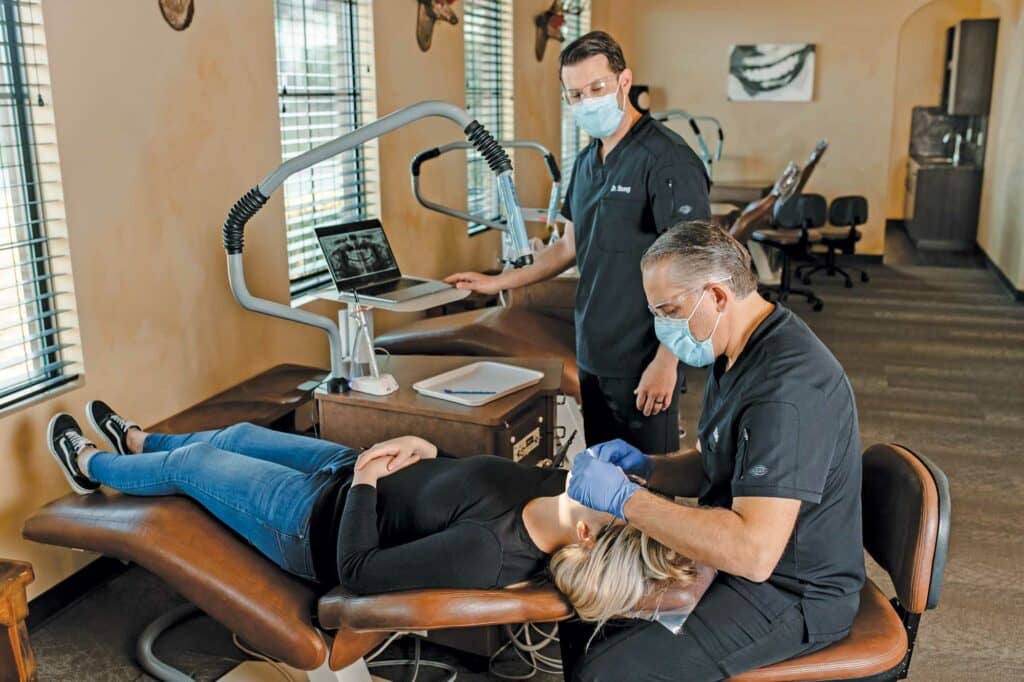
A Patient Financing Software Solution
Modern digital workflow has played a large role in Lustig and Young’s continued success. To help out with the business side of the practice, fairly early on, the duo came across OrthoFi, a patient acquisition, insurance management, and patient collections software and service company. It took a few years before they officially adopted the solution, but now they are able to make services more affordable for patients and improve the overall patient experience.
“OrthoFi has helped to grow our practice,” Young explains. “Traditionally, orthodontists put patients into a small ‘box’ of payment options. Typically, this would hover around 20% down and a couple hundred dollars a month. OrthoFi helped us focus more on aggregate cash flow than a transactional cash flow, allowing us to expand our payment options outside that traditional box. Offering unlimited options for financing—using their payment slider—has allowed more patients to be able to accept treatment.”
Operating on the premise that patients don’t always fit neatly into standard boxes, Denver-based OrthoFi helps manage potentially complicated issues such as insurance processing and payment management. “OrthoFi allows patients to personalize their own financial plan and that helps increase case acceptance and same-day conversion,” Lustig says. “It helps to increase patient satisfaction. With their help, we saw significant growth year over year. We’ve really had good success with it.”
“Another big advantage of OrthoFi is that they have a really large team of people who can help perform patient collection along with insurance verification and collection,” Young adds. “OrthoFi can increase collection rates, decrease delinquency, and is great with follow-up.”
Standardizing Processes Across Multiple Locations
All of Lustig and Young’s practices use OrthoFi which standardizes processes across all locations, making everything more efficient from a financial and operational standpoint. Lustig says that with all orthodontic collections and insurance verification in one place, “it makes it easy for our financial team to gather crucial data.”
For the all-important money concerns, OrthoFi gives parents control of their financial situation, helping to remove typical objections from orthodontic treatment. After all, Lustig points out that orthodontic care is an elective procedure.
“The goal is to remove as many objections as possible and give patients or parents good feelings from beginning to end,” Lustig says. “They are doing this to improve themselves or their children. All too often, finances inadvertently put a stop to making this happen…I felt like OrthoFi was great for our practice because it removed what I would consider to be the number one objection to orthodontics—and that is money.”
In addition to financing, OrthoFi streamlines consent forms, medical history, and much of the daunting initial paperwork thanks to a convenient online portal that patients may access from home if they choose. With the paperwork completed, Lustig and Young can get straight to the treatment plan and the creative clinical side of the profession.
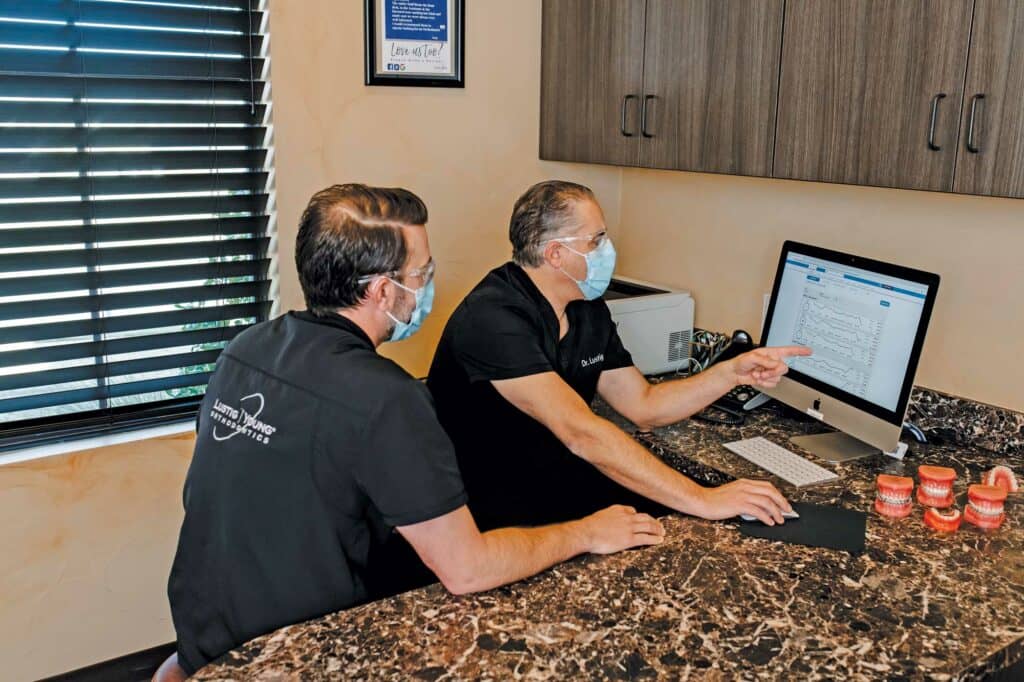
Advances in Technology Advance Patient Care
Lustig and Young are “early adopters” of new technology but do rely on peers in their study clubs to help vet things out. “Once we know it can benefit us, streamline our processes, help employees become more efficient, or give us the ability to provide better patient care, we adopt as soon as possible,” Young enthuses. “Advances in technology are how you advance care for patients. That’s how you can become more efficient in the clinic and more profitable in the business.”
Efficiency is a word often repeated by Lustig and Young, mainly due to the high stakes of ownership in more than 40 practices. Knowing what works for them and implementing this in other offices has proven to be a successful formula, and Young points out: “When you divide your team or your time, you must have robust systems in place to keep quality care and efficiency at the forefront.”
Anything less would mean a mountain of stress, and that’s not the kind of challenge that either doctor prefers. With solid systems in place, a bit of free time can be spent with a clear conscience. For Lustig and Young that means time spent outdoors with their respective families. Lustig has three daughters and two sons while Young has three daughters and one son.
“Put me in the woods and I’m happy,” Lustig says with a chuckle. “I like to be in the mountains and I like hunting—specifically bow hunting as well as fishing. I love all sports, playing them and watching them. I love doing those things with my family too—teaching my boys and girls to have some of the interests that I have is a passion.”
Some of that passion can be spotted in the office décor with antler chandeliers and an outdoorsy theme. It all fits in with a philosophy that is not afraid to push the boundaries and pursue lofty goals. “We want to climb the tallest mountain,” Lustig muses. “We want the ability to impact as many people as we can. We enjoy the challenge and the growth.” OP
Greg Thompson is a contributing writer for Orthodontic Products.



